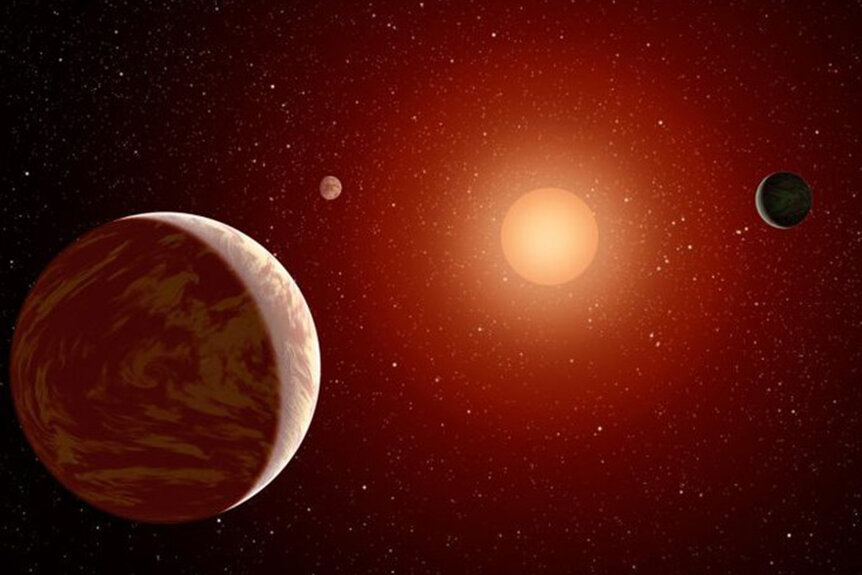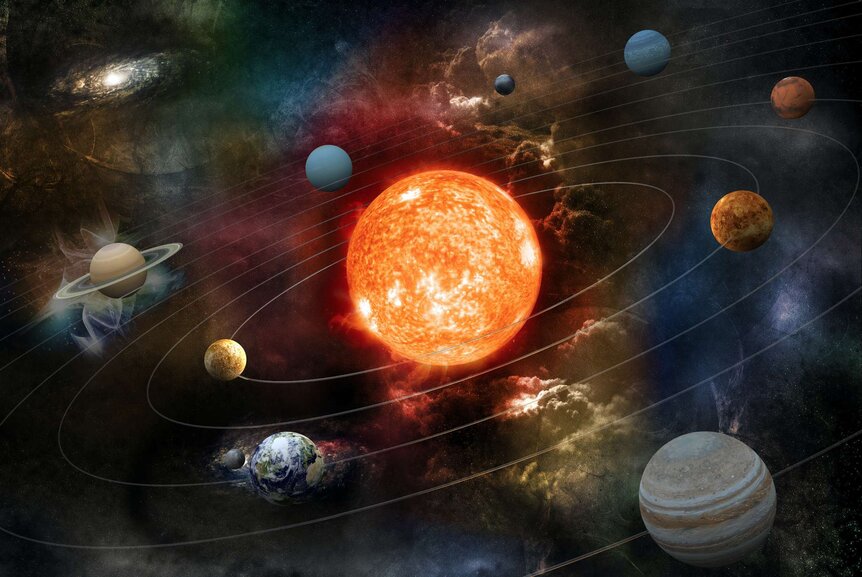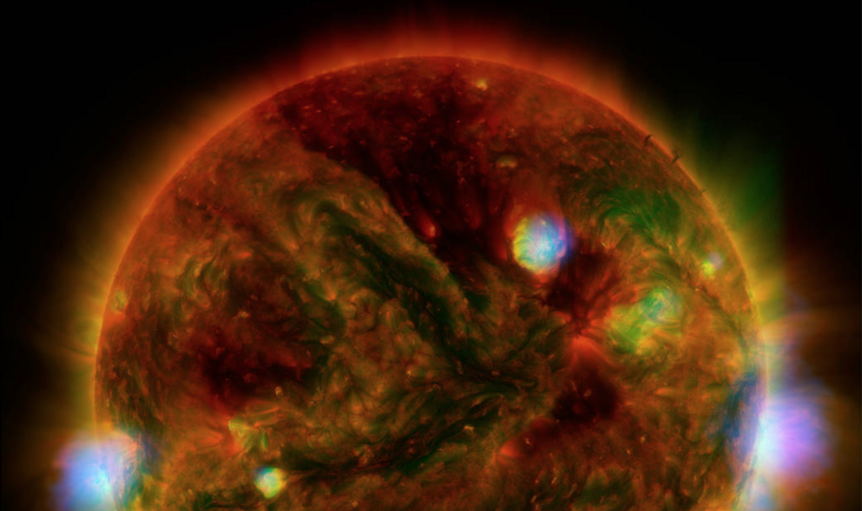Create a free profile to get unlimited access to exclusive videos, sweepstakes, and more!
How and When Will the Sun Die?
We know the approximate manner of the Sun's demise.
It’s generally understood that if humanity wants to persist long-term, we’re going to have to get off the planet for good. Even if we manage to avoid war, famine, disease, and asteroids falling out of the sky, our planet does have an expiration date. Fortunately, the end of the world – the real end of the world – won’t be for billions of years, so we’ve got a little bit of buffer time.
Isn’t it curious, then, that the crew of SYFY's The Ark (streaming now on Peacock) would jump ship for distant cosmic ports only a century from now? It’s unlikely that the Earth will actually be unlivable in 100 years, but the arkers may have been right about having less time than we think.
Here’s what we know about how the Sun will die and take the Earth with it.
How the Sun will evolve and die over the next 10 billion years
The Age of Stars
The Sun formed along with the rest of the solar system about 4.5 billion years ago, which gives us a birth date, but we want to know when the Sun will croak. Astronomers can estimate the lifespan of a star based on its mass and comparisons with other similar stars at different stages of development.
RELATED: Which is the More Accurate Apocalypse: Deep Impact vs. Armageddon?
Mass matters because, in general, the more fuel a star has to start with the shorter its existence. You might think that a more massive star would last longer, what with all that fuel to fuse, but there’s no standard rate of fusion. The more massive a star, the more rapidly it burns itself out. Big stars burn fast and die young.
Blue giant stars with masses thousands of times the mass of the Sun extinguish themselves in just 10 million years or so, little more than an immense flash in the cosmic pan. By contrast, red dwarfs – the stars that make up about three quarters of the Milky Way – are comparatively teeny tiny and will continue shining more or less unchanged for trillions of years.
The Sun, meanwhile, is a medium sized star between the two extremes with an estimated lifespan measured in billions of years. At present, the Sun is roughly middle aged, somewhere between a third and halfway through its life, depending on when you consider the time of stellar death. It has between 5 and 10 billion good years left. In the meantime, however, the Sun will go through some pretty dramatic transformations.
When the Sun Swallows the Earth
Perhaps the most well-known and most discussed event in the Sun’s future involves an incredible growth spurt, transforming the Sun from a cozy yellow star into a gigantic red giant. Every day, every second, the Sun is out there converting itself into light and heat.
Deep in the heart of a star, incredible pressure crushes atoms of hydrogen together until they fuse, forming helium. In the process of fusing, some of the matter is converted into energy and released.
RELATED: Cannibal Coronal Mass Ejection on Collision Course With Earth
Slowly, over the course of tens of thousands of years, that energy (in the form of light and heat) wiggles its way out of the core and toward the surface. Eight minutes after that it reaches the Earth and you feel the gentle caress of sunlight on your face.
Every bit of light and heat you enjoy on a nice summer day is a piece of the Sun, lost. The daily changes inside the Sun’s core are small but over the course of billions of years, they matter. About 5 billion years from now the stored hydrogen in the Sun’s core will run out. In a mad dash to keep the fusion engine operational, the core will condense and dump a whole bunch of heat into the outer layers. The Sun will expand, swallowing Mercury, Venus, and maybe the Earth in the process.
Five billion years is a long way off, but all life on Earth will be toast (quite literally) long before that.
The Sun Gets Brighter Over Time
The relationship between the core and the outer layers will eventually result in the Sun inflating like a blowfish, but it’s causing some less noticeable changes in the meantime. With each bit of material fused, a bit of mass is lost from the core, shifting the balance between inward gravitational pressure and outward thermal pressure.
RELATED: Climate engineers propose blocking the Sun by blasting Moon dust at it
Slowly but surely, the balance is tipping toward thermal expansion and the Earth will start seeing negative effects a while before the Sun comes in for the kill. As helium is fused into hydrogen in the core, the slowly ramping temperature puffs up the Sun just a little bit every day and, as a result, the Sun gets a little brighter and a little warmer in the sky. On average, the Sun gets about 1% brighter every 100 million years.
About a billion years from now, when the Sun is roughly 10% brighter, global temperatures will get hot enough to actively evaporate ocean surface waters. The skies will fill with water vapor, a potent greenhouse gas, triggering a feedback loop which will boil the oceans and turn the Earth temporarily into a world more closely resembling Venus. The planet will survive, but it won’t be the paradise we know and enjoy today.
The Sun’s Final Blowout
Not massive enough to go supernova or collapse into a black hole, the Sun will have a more modest but still devastating death. Roughly 10 billion years from now, having swallowed a few of the inner rocky planets, the Sun will finally shed what remains of its body, leaving only its bones behind.
The last of its outer shells will slough off and a superdense white dwarf will remain. Recent models suggest that, at that point, the Sun will become the shining light behind a faint planetary nebula. The feeble castings of the Sun’s still glowing heart will light up a cloud of gas and dust – the decomposed flesh of the Sun – for distant astronomers to see.
It will be a long time from now but maybe, if we do manage to send explorers to other worlds around other stars, they’ll be able to turn back toward their ancestral home and see it.
We’re a few billion years from the big show, so catch up on The Ark in the meantime, on Peacock.






































